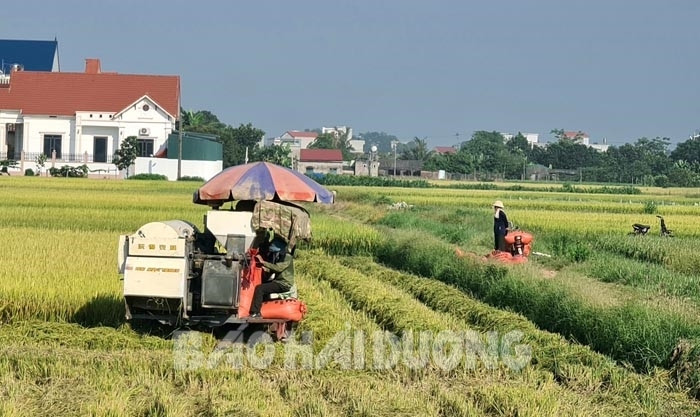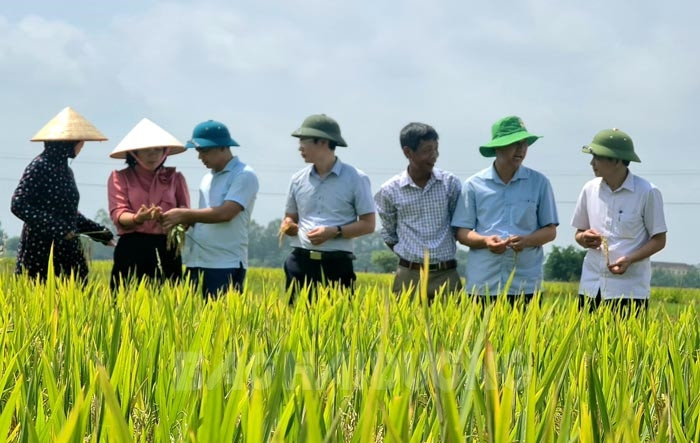According to the assessment of the interdisciplinary delegation, Hai Duong's winter-spring rice yield reached 67 quintals/ha. Of which, the rice yield in Kim Thanh district reached 69 quintals/ha, the highest in the province.

The whole province has harvested more than 9,000 hectares of rice, reaching more than 17% of the area.
On June 1, an interdisciplinary delegation including the Department of Agriculture and Rural Development, the Department of Planning and Investment, and the General Statistics Office assessed the spring rice yield in Cam Giang, Binh Giang, and Thanh Mien districts. According to the delegation's assessment, this year's winter-spring crop had basically favorable weather, and many rice fields were mechanized from land preparation to fertilization, so the rice grew well, developed evenly, and had few pests and diseases.
Previously, the Department of Agriculture and Rural Development of localities sent reports assessing rice productivity this crop to the Department of Agriculture and Rural Development of the province. Accordingly, this crop, the average rice yield of the whole province is estimated at over 67 quintals/ha, as high as the winter-spring crop last year. This is the second consecutive year that the winter-spring rice yield has reached a high level. The rice yield in Kim Thanh district is estimated at 69 quintals/ha, the highest in the province. Some localities with high productivity such as Kinh Mon town, Nam Sach, Cam Giang, Binh Giang, Gia Loc reached from 68 - 68.7 quintals/ha. Due to the terrain characteristics of many mountainous areas and difficulties in irrigation, Chi Linh city's rice yield only reached 63 quintals/ha, the lowest in the province.

The weather is basically favorable so rice grows and develops well, with few pests and diseases.
To date, the province has harvested more than 9,000 hectares of early and mid-season rice, reaching more than 17%, equivalent to the same period last year. The Department of Agriculture and Rural Development has requested districts, towns and cities to direct farmers to mobilize machinery and quickly harvest ripe rice areas to free up land for early winter crops. For late-season rice, it is necessary to zone off areas severely damaged by pests and diseases to focus on care and timely spraying, minimizing damage caused by pests and diseases.
TH